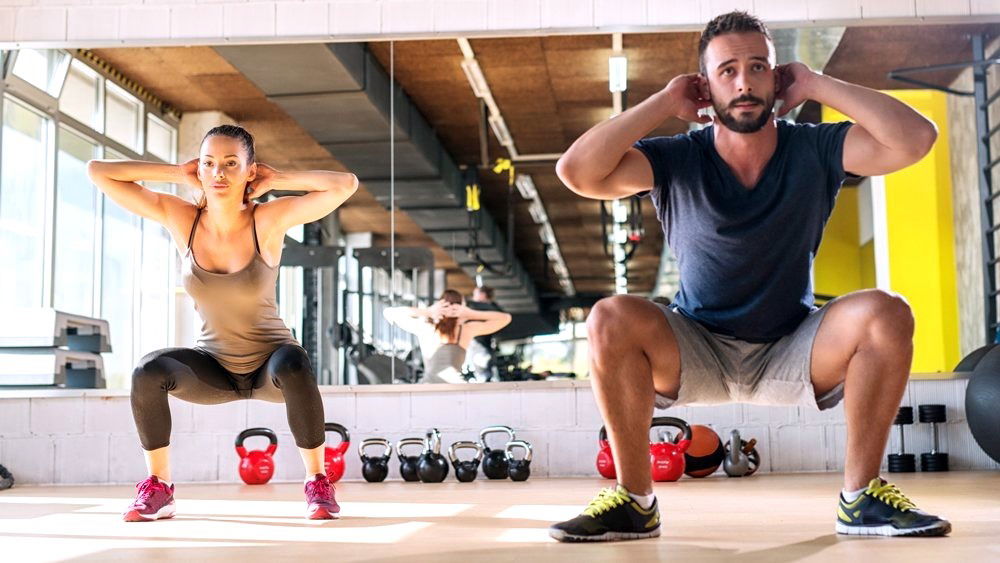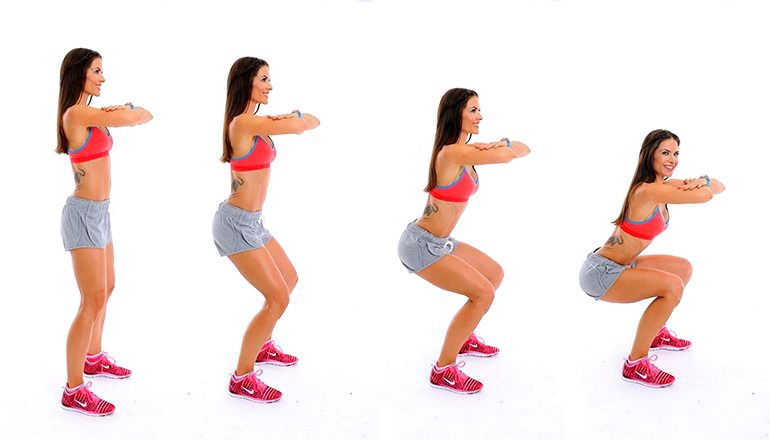SQUAT

A squat is a strength exercise in which the trainee lowers their hips from a standing position and then stands back up. During the descent of a squat, the hip and knee joints flex while the ankle joint dorsiflexes; conversely the hip and knee joints extend and the ankle joint plantarflexes when standing up. Squats are considered a vital exercise for increasing the strength and size of the lower body muscles as well as developing core strength. The primary agonist muscles used during the squat are the quadriceps femoris, the adductor magnus, and the gluteus maximus. The squat also isometrically uses the erector spinae and the abdominal muscles, among others. Many of these muscles help power you through daily tasks such as walking, climbing stairs, bending, or carrying heavy loads. They also help you perform athletic-related activities. Adding squats to your workouts can help boost your exercise performance, decrease your risk of injury, and keep you moving more easily throughout the day. Known as a bodyweight squat or an air squat, the most basic type of squat uses just your body weight for resistance. Variations of the squat can include weights, like barbells or dumbbells, resistance bands, or yoga balls. As the body descends, the hips and knees undergo flexion, the ankle extends (dorsiflexes) and muscles around the joint contract eccentrically, reaching maximal contraction at the bottom of the movement while slowing and reversing descent. The muscles around the hips provide the power out of the bottom. If the knees slide forward or cave in then tension is taken from the hamstrings, hindering power on the ascent. Returning to vertical contracts the muscles concentrically, and the hips and knees undergo extension while the ankle plantarflexes.

HOW TO DO?
Stance will vary slightly from person to person, but your feet should be between hip- and shoulder-width distance apart, with your toes slightly turned out (between 5 and 15 degrees). Your spine should be neutral, shoulders back, chest open. Make sure you keep your heels down and keep them planted throughout the move. You can clasp hands in front of chest for balance. Common errors of squat form include descending too rapidly and flexing the torso too far forward. Rapid descent risks being unable to complete the lift or causing injury. This occurs when the descent causes the squatting muscles to relax and tightness at the bottom is lost as a result. Over-flexing the torso greatly increases the forces exerted on the lower back, risking a spinal disc herniation. Another error is when the knee is not aligned with the direction of the toes, entering a valgus position, which can adversely stress the knee joint. Another error is the raising of heels off the floor, which reduces the contribution of the gluteus muscles. Initiate the movement by sending the hips back as if you’re sitting back into an invisible chair. Bend knees to lower down as far as possible with chest lifted in a controlled movement. Keep lower back neutral. Press through heels to stand back up to starting position. Repeat. Aim to get thighs at least parallel to the floor. To do this, squat down so your thighs are even with your knees. If mobility allows, lower further. As you come back up, make sure hips are set right under your ribs— you don’t want your hips to pull too far back. 19가이드03
